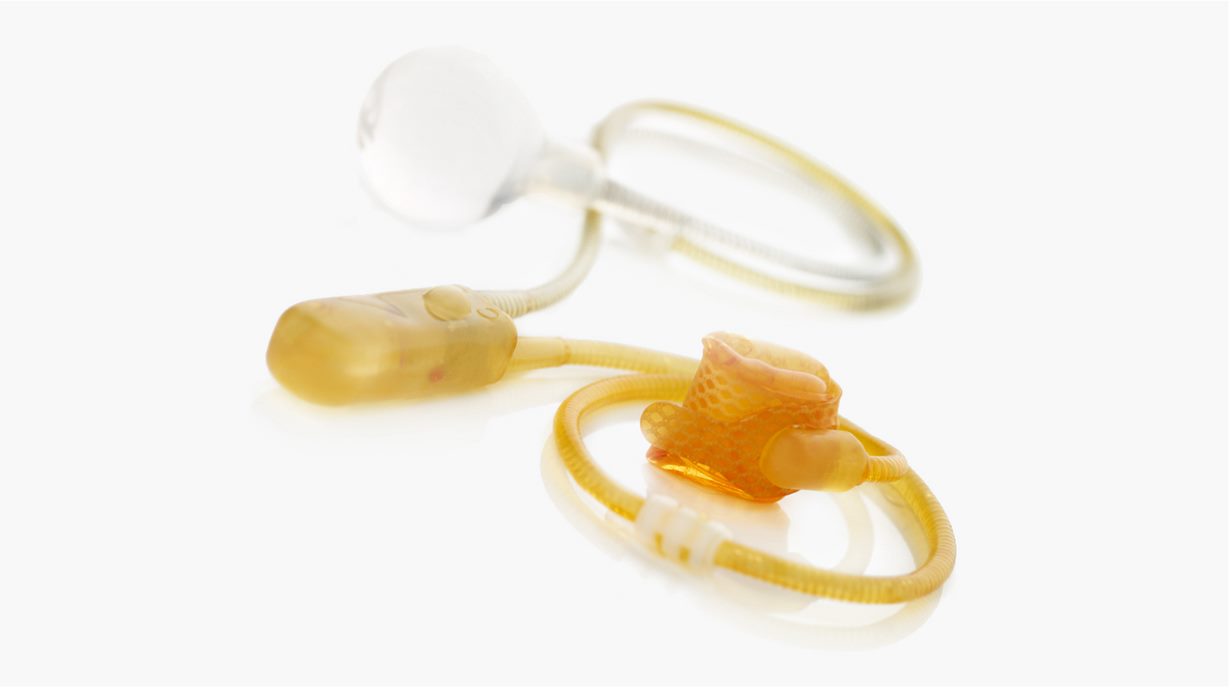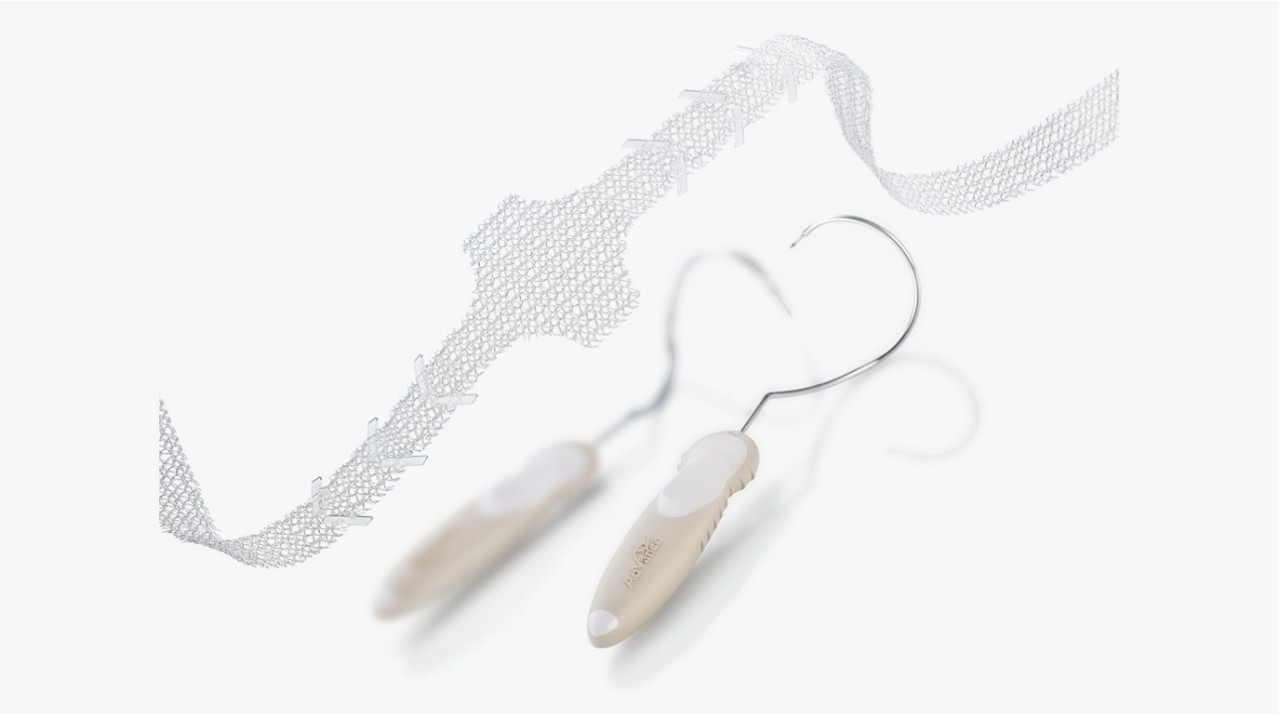Understanding featured treatment options
Urinary incontinence, also known as bladder leakage, can stop you from living a full and active life. Urinary incontinence can be treated in a few ways. Read more about the treatment options offered by Boston Scientific below.
AMS 800™ Artificial Urinary Sphincter
The AMS 800 Artificial Urinary Sphincter (AUS) mimics a healthy sphincter, allowing you to urinate when desired.

What to expect from the procedure
The AUS procedure can be performed on an outpatient basis or may require a short hospital stay. Small openings are made near the scrotum and below the abdomen to insert an inflatable cuff, a pump, and a small balloon (pressure regulating balloon to help restore bladder function). The surgery is performed under anesthesia. About 4 to 6 weeks after surgery, patients return to their urologist’s office to have the AUS activated.
Knowing the side effects
As with most surgical procedures, there are potential risks and complications associated with surgery. Your physician can further explain your specific risks based on your medical history. Some adverse reactions include, but are not limited to: device malfunction or failure which may require revision surgery, wearing away/loss of tissue (device/tissue erosion), inability to urinate (urinary retention), infection, and postoperative pain.
Looking to recovery
Most men see positive results following their procedure. One study of 57 male patients found that approximately 90% of long-term (more than 10 years) patients are satisfied overall.1 Speak to your doctor after your procedure about when to resume physical activities.
AdVance™ XP Male Sling
The AdVance XP Male Sling is completely concealed inside the body. It works like a hammock to support the urethra and helps restore bladder control for men.

What to expect from the procedure
The AdVance XP Sling is designed to stop leakage by supporting the sphincter muscle, using a sling of soft mesh placed inside the body. The sling moves the sphincter back to its natural position to help restore bladder control. The AdVance XP Sling requires no action by the patient to function. Small openings are made to access the urethra and the urinary sphincter. The sling is placed under the urethra and tensioned to reposition the urethra and optimize the sphincter's function. The procedure is usually done on an outpatient basis and is performed under anesthesia.
Knowing the side effects
As with most surgical procedures, there are potential risks and complications associated with surgery. Some risks include, but are not limited to: device failure, urinary retention, postoperative pain, irritation at the wound site, or a reaction to the implant itself.
Looking to recovery
Most men see positive results following their procedure. The AdVance XP Male Sling System has demonstrated cured or improved* rates ranging from 63.2% to 83.0% at 5 years in patients with mild to moderate incontinence.2,3 Speak to your doctor after your procedure about when to resume physical activities.
Regular follow-up visits
It’s important to maintain all follow-up visits, even if you’re feeling well. During these visits, your doctor will monitor your progress, evaluate your medications, and check the status of your overall health to determine the success of your procedure.